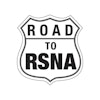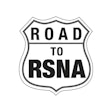Sunday, November 30 | 1:00 p.m.-1:10 p.m. | S4-SSVA01-1 | Room E353A
On Sunday afternoon, researchers will share results from an experimental study that suggest gadoteric acid could be a viable alternative for photon-counting CT angiography (PCCTA) of the lower extremities in individuals with certain conditions.
These include hyperthyroidism or an allergy that makes them vulnerable to iodinated contrast agents.
"The combination of gadoteric acid as contrast agent and low-keV VMI [virtual monoenergetic imaging] from [PCCTA] allows for diagnostic image quality in angiograms of the femoral arteries at clinically approved concentrations," presenter Kristina Krompass, MD, of the University Hospital Würzburg in Germany, and colleagues wrote.
The study consisted of PCCTA imaging of the femoral arteries on a cadaver weighing 176 lb. The team administered gadoteric acid at three concentrations (0.2 ml/kg [16 ml, standard dose for body MRI], 0.4 ml/kg [32 ml], and 0.6 ml/kg [48 ml]).
The group also performed identical scans using iodinated contrast and measured intraluminal and muscle attenuation and image noise to calculate contrast-to-noise ratios. Three radiologist readers compared image quality, noise, and vascular contrast of the two sets of exams using a 5-point scale (with 1 equal to poor and 5 equal to excellent).
Overall, the researchers reported that the gadoteric acid produced intraluminal attenuation at much lower [Hounsfield units] than the iodine contrast agent -- and that the exam was considered "diagnostically sufficient."
Attend this session to discover more about the investigators' findings.


